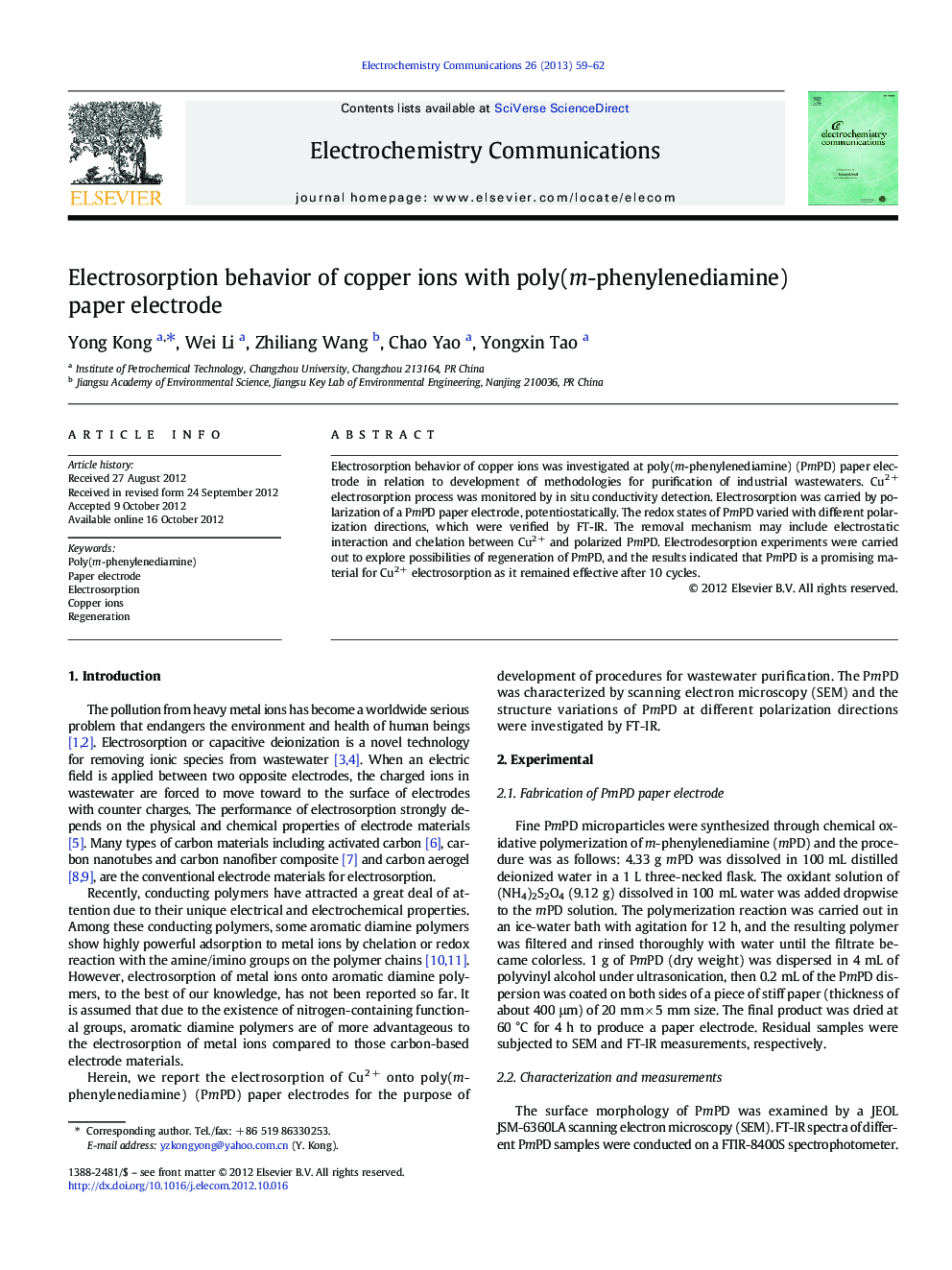| Article ID | Journal | Published Year | Pages | File Type |
|---|---|---|---|---|
| 179623 | Electrochemistry Communications | 2013 | 4 Pages |
Electrosorption behavior of copper ions was investigated at poly(m-phenylenediamine) (PmPD) paper electrode in relation to development of methodologies for purification of industrial wastewaters. Cu2 + electrosorption process was monitored by in situ conductivity detection. Electrosorption was carried by polarization of a PmPD paper electrode, potentiostatically. The redox states of PmPD varied with different polarization directions, which were verified by FT-IR. The removal mechanism may include electrostatic interaction and chelation between Cu2 + and polarized PmPD. Electrodesorption experiments were carried out to explore possibilities of regeneration of PmPD, and the results indicated that PmPD is a promising material for Cu2 + electrosorption as it remained effective after 10 cycles.
Graphical abstractPolarization can alter the structure of poly(m-phenylenediamine) (PmPD), and negatively polarized PmPD is of more advantageous to the electrosorption of Cu2 +. The PmPD electrode can undergo ten successive electrosorption/electrodesorption cycles without the loss in the ability of Cu2 + electrosorption.Figure optionsDownload full-size imageDownload as PowerPoint slideHighlights► For the first time, PmPD is used as an electrode material for Cu2 + electrosorption. ► Negatively polarized PmPD is of more advantageous to the electrosorption of Cu2 +. ► FT-IR proves an increased content of imine structure after negative polarization. ► PmPD can undergo ten successive electrosorption/electrodesorption cycles.
